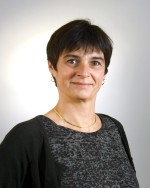Towards clean biomethaneEnd of the BioCAD project
The research project conducted in partnership with Veolia Water by Cécile Hort-Hous, Associate Professor at the Laboratory of Thermal, Energy and Process Engineering (LaTEP) at the University of Pau and Pays de l'Adour, is in line with a circular economy and energy efficiency approach. Its innovative results, focused on the treatment of gases from organic waste and the recovery of the by-products generated, have already helped to raise the institution's scientific visibility and forge several international collaborations.

Biogas produced from the anaerobic digestion of organic waste is a valuable renewable energy source. However, it contains a complex mixture of gases, including methane (CH₄), carbon dioxide (CO₂), and volatile organic compounds (VOCs) that can damage storage and recovery units. To produce pure biomethane that can be used as an energy source, it is therefore essential to effectively separate its components.
The BioCAD* project has taken up this challenge by focusing on an original process: the pyrolysis of digestate (solid residue from methanization) and other types of organic waste to produce biochars, which are porous materials capable of trapping unwanted gases by adsorption, a process that fixes gases to the surface of solids.
The team designed a unique semi-industrial experimental setup capable of simulating real-world biogas treatment conditions, including the presence of water vapor—a parameter that has long been overlooked but is crucial to understanding adsorption mechanisms..

The tests identified two highly effective adsorbents: CNR-115-ox and its amino derivative CNR-115-ox-am, capable of efficiently separating CO₂ from methane, even under humid conditions. The study revealed phenomena of temporary methane desorption, paving the way for new mathematical simulation models that more closely reflect the actual behavior of biogas.
Collaboration with Colombia to recycle cocoa waste
For two years, scientific exchanges took place with the Technological University of Pereira in Colombia on the use of local waste (cocoa pods, bamboo, coffee waste) to produce biochar. These exchanges led to new avenues for recycling this often-neglected waste.
The quality of the work resulted in several scientific publications from the end of 2024 onwards, notably in the journals C – Journal of Carbon Research, Sustainability, Chemical Engineering Journal Advances, the Journal of Environmental Chemical Engineering (with Veolia Water) and Biomass and Bioenergy (with the University of Pau and Pays de l'Adour's Complex Fluids and Reservoirs Laboratory).
BioCAD has not only made it possible to overcome several technological barriers in the field of biogas utilization, but also to develop rare expertise in the treatment of renewable gases. The future is already taking shape: a new collaboration with Peter Moonen (DMEX, UPPA) on 3D mapping of physisorption phenomena, with funding from Carnot ISIFoR, and discussions on the creation of an international laboratory dedicated to these issues.
* Full name of the project: : Study of BioChar derived from methanisation for biogas and air treatment by ADsorption
The Energy and Environment Solutions (E2S) I-SITE is a research consortium bringing together UPPA, INRAE, Inria, and CNRS, which has obtained funding from the Investments for the Future Program thanks to the I-SITE (“Sciences, Innovation, Territories, Economy Initiative”) label of academic excellence.
Between 2017 and 2024, I-SITE has funded a number of collaborative research projects, including “scientific challenges” designed to identify innovative topics and overcome technological barriers.



